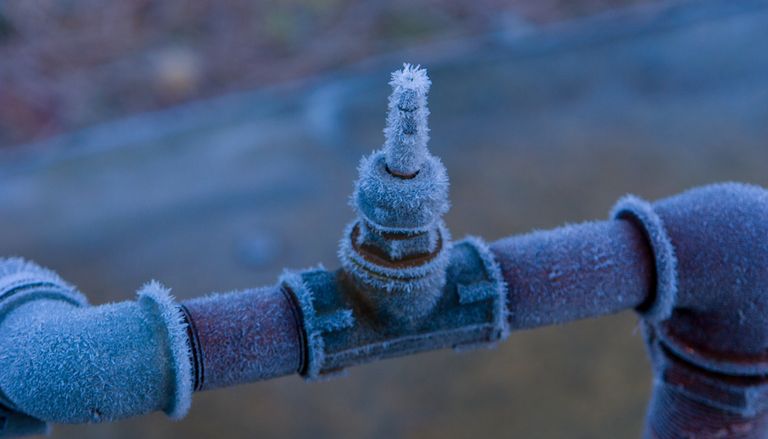Avoid Frozen Pipes in Winter: Pro Strategies
Avoid Frozen Pipes in Winter: Pro Strategies
Blog Article
We have uncovered this post relating to How to prepare your home plumbing for winter weather listed below on the internet and thought it made sense to write about it with you over here.

Cold weather can damage your pipes, specifically by freezing pipes. Right here's how to stop it from taking place and what to do if it does.
Introduction
As temperatures drop, the danger of icy pipes rises, possibly bring about pricey repair services and water damages. Understanding just how to prevent icy pipes is crucial for home owners in chilly environments.
Understanding Frozen Pipes
What triggers pipelines to ice up?
Pipes ice up when subjected to temperature levels below 32 ° F (0 ° C) for prolonged periods. As water inside the pipelines freezes, it increases, putting pressure on the pipe wall surfaces and possibly triggering them to burst.
Dangers and damages
Frozen pipelines can cause water supply disruptions, home damage, and costly repair work. Burst pipelines can flood homes and trigger considerable structural damages.
Indications of Frozen Water Lines
Determining frozen pipes early can prevent them from breaking.
Exactly how to recognize frozen pipelines
Try to find lowered water flow from taps, unusual smells or noises from pipes, and noticeable frost on exposed pipes.
Avoidance Tips
Protecting vulnerable pipes
Wrap pipelines in insulation sleeves or utilize heat tape to shield them from freezing temperature levels. Focus on pipelines in unheated or exterior areas of the home.
Heating techniques
Keep indoor areas properly heated up, specifically locations with pipes. Open up closet doors to permit warm air to flow around pipes under sinks.
Securing Exterior Plumbing
Yard tubes and exterior faucets
Separate and drain pipes yard hose pipes before winter. Mount frost-proof faucets or cover outside faucets with shielded caps.
What to Do If Your Pipelines Freeze
Immediate activities to take
If you think frozen pipelines, keep faucets open to soothe stress as the ice thaws. Utilize a hairdryer or towels taken in warm water to thaw pipelines gradually.
Long-Term Solutions
Architectural modifications
Consider rerouting pipelines away from outside wall surfaces or unheated areas. Add extra insulation to attic rooms, basements, and crawl spaces.
Upgrading insulation
Purchase top quality insulation for pipelines, attics, and walls. Correct insulation helps maintain regular temperatures and reduces the danger of icy pipelines.
Conclusion
Stopping icy pipelines calls for proactive actions and quick feedbacks. By recognizing the causes, indicators, and preventive measures, house owners can secure their pipes throughout winter.
6 Proven Ways to Prevent Frozen Pipes and Protect Your Home
Disconnect and Drain Garden Hoses
Before winter arrives, start by disconnecting your garden hoses and draining any remaining water. Close the shut-off valves that supply outdoor hose bibs and leave the outdoor faucet open to allow any residual water to drain. For extra protection, consider using faucet covers throughout the colder months. It’s also important to drain water from any sprinkler supply lines following the manufacturer’s directions.
Insulate Exposed Pipes
Insulating your pipes is an effective way to prevent freezing. Pipe insulation is readily available at home improvement stores and is relatively inexpensive. Pay close attention to pipes in unheated areas such as the attic, basement, crawl spaces, or garage. Apply foam insulation generously to create a buffer against the cold. You can also wrap your pipes in heat tape or thermostat-controlled heat cables for added warmth.
Seal Air Leaks
Inspect your home for any cracks or openings that could let in cold air. Seal any holes around the piping in interior or exterior walls, as well as the sill plates where your home rests on its foundation. Additionally, make sure to keep your garage door closed unless you’re entering or exiting. Leaving it open creates a significant air leak that can lead to frozen pipes.
Allow Warm Air Circulation
During cold snaps, it’s essential to allow warm air to circulate evenly throughout your home. Leave interior doors ajar to promote better airflow. Open kitchen and bathroom cabinets to help distribute heat consistently around the rooms. If you have small children or pets, be sure to remove any household chemicals or potentially harmful cleaners from open cabinets for safety.
Let Faucets Drip
A small trickle of water can make a big difference in preventing ice formation inside your pipes. When temperatures drop significantly, start a drip of water from all faucets served by exposed pipes. This continuous flow helps prevent the water from freezing. Additionally, running a few faucets slightly can relieve pressure inside the pipes, reducing the chances of a rupture if the water inside does freeze.
https://choateshvac.com/6-proven-ways-to-prevent-frozen-pipes-and-protect-your-home/

Do you appreciate more info about How to Prevent Your Pipes From Freezing? Post feedback below. We will be glad to listen to your ideas about this review. Hoping that you come back again soon. Sharing is caring. One never knows, you could be doing someone a favor. Thanks so much for taking the time to read it.
Get Started Report this page